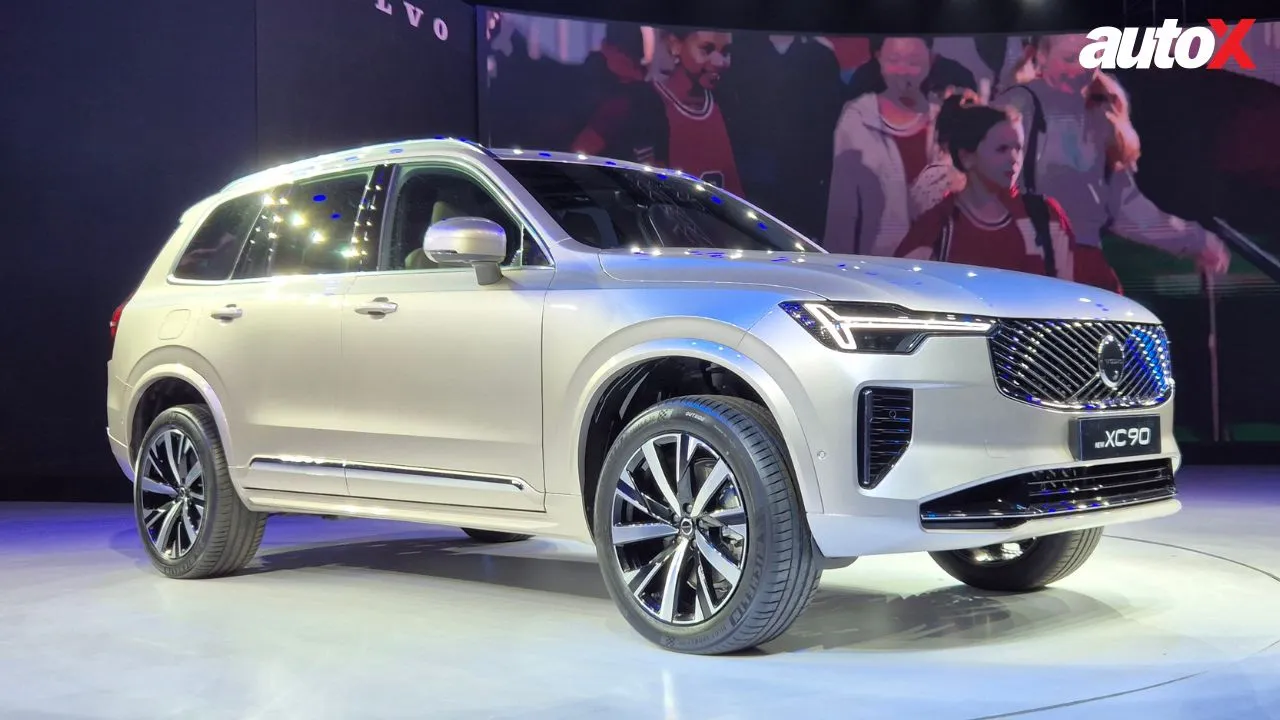Audi A4 vs BMW 3 Series vs Mercedes-Benz GLC vs Hyundai Tucson: Comparison
The Audi A4, BMW 3-Series, Mercedes-Benz GLC, and Hyundai Tucson might be worlds apart from each other, but these are certainly united by their crazy affectionate from a typical consumer. So, here's a very unusual comparison to see which one is really the master of this ballgame.

With a question mark over the future of diesel cars, petrols are making a comeback. But, are these new petrol machines the real deal or just a fallback option for carmakers? As self-proclaimed petrolheads, we set out to find the answer…
Petrolhead – if you refer to a slightly out-dated dictionary – is a person who’s a car fanatic, or someone overly obsessed with machines propelled by internal combustion engines. If you’re in tune with the times, though, you may know that petrolhead is no longer a universal term for car enthusiasts – for diesel engines have made massive strides over the past decade or so. Yes, the dirty old diesel – which once seemed fit only for commercial vehicles and agricultural equipment – is now at par with gasoline engines in terms of performance. Not only that, diesel engines are more reliable and refined than ever before. And, of course, when it comes to fuel economy, they continue to give thirsty petrols a sound thrashing.
With diesel engines taking the market by storm, petrol cars had no choice but to take a back seat over the last few years. Closer to home too the demand for diesel cars shot through the roof. From small hatchbacks to high-end luxury vehicles, diesel became the preferred choice for car buyers around the country. But how long will this trend continue?
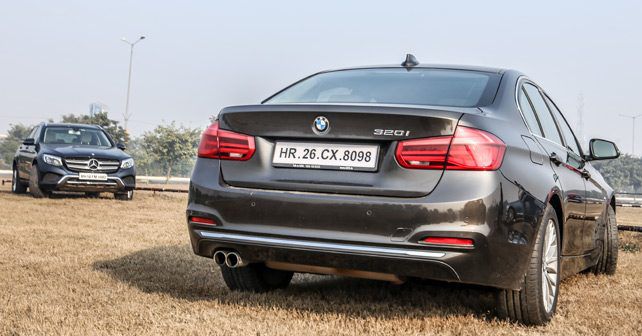
You see, exactly a year ago the NGT (National Green Tribunal) took it upon themselves to clean up the capital’s foul air – and rightly so! The manner in which they went about the task, however, is up for debate. They immediately went after diesel engines – claiming that they run on “dirty” fuel. The governing body decided to put a blanket ban on the sale of new diesel vehicles in Delhi/NCR with an engine capacity of 2.0-litres and above – because, irrespective of the technology used, the bigger the engine more the pollution. Or so the NGT believes!
And while the diesel ban was limited to the National Capital Region – it has since been lifted – its aftermath was profound. The diesel ban sent out a message, loud and clear, to car manufacturers as well as prospective buyers – the future of diesel cars hangs under a cloud. Call it a blessing in disguise, but this rising negative sentiment forced carmakers to bring the good ol’ petrol back into the game. Of course, petrol engines have always been available. However, in recent times, their demand has spiked considerably. Hyundai says that one-third of the Creta’s sales in 2016 came from petrol derivatives. Toyota now has the Innova and Fortuner both available with a petrol motor from the get-go – which is quite surprising because a diesel engine is typically the default choice for an SUV or MUV. In our market at least, they go together like gin and tonic.
In the luxury segment, though, the shift to petrol has been more evident. One of the reasons for this is that this segment is less price sensitive when it comes to running costs. But that’s to say nothing of the fact that the price gap between petrol and diesel fuel has been coming down over the past few years. Buyers in the premium segment also try to be more environmentally conscious if they can, as a result of which there have been a flurry of premium petrol cars launched in the past year itself.
What we’re here to find out, then, is if petrol power is really back and if it’s still all that it’s cracked up to be – have we really been missing out all these years?
The Contenders
Audi, BMW and Mercedes-Benz have always been at the forefront of the luxury car space, so we thought it’s apt to showcase their latest petrol offerings. From Munich, we’ve got the BMW 320i. Keeping tabs on the Bimmer is its beloved rival from Ingolstadt, the Audi A4 30 TFSI. Now, while the Mercedes-Benz C-Class would’ve been the ideal third suspect here, we thought it best to bring along its SUV counterpart – the GLC 300. Why? Well, because SUVs are hot property across segments at the moment.
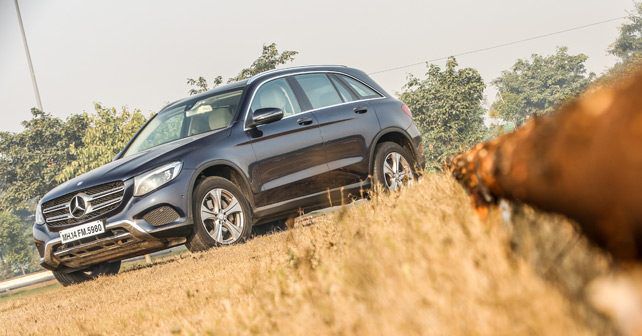
Simmering Rivalry
When you take a look at the spec-sheet of these cars, it’s certainly possible that you may be left a little underwhelmed. Take the 320i for instance, it’s powered by a 2.0-litre turbo direct-injection engine that develops 181bhp at 5,000rpm and 270Nm of torque between 1,350-4,600rpm. In comparison to the 241bhp/350Nm 328i that was discontinued in India just over a year ago, the 320i may seem like a step backwards. And, to be honest, the 320i doesn’t even look that sporty in its latest avatar. In fact, you don’t even get the tasty M Sport kit with the 320i – it’s reserved for the diesel 320d for crying out loud!
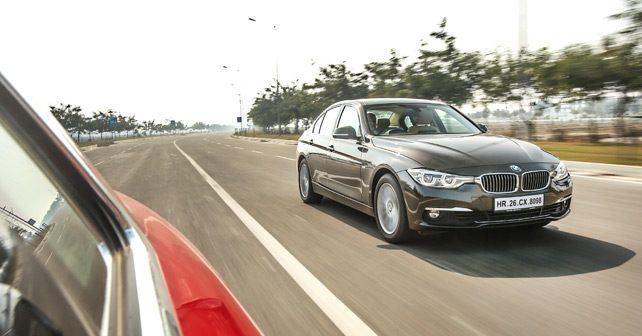
There are four driving modes on offer – Eco Pro, Comfort, Sport and Sport+. While the first three are self-explanatory, the fourth eases the firm grip that the traction control system ordinarily has over the drivetrain so you can still have some tail-out fun with this rear-wheel drive sports sedan. And because this chassis is so neutral and inspires so much confidence it really does make you feel like you’ve acquired the driving skill of a professional drifter. Fortunately, for all of us BMW-fans, in this sterile world, the 3 still retains its playful nature – and it’s this character that sets the BMW apart from the rest. And it’s this inherent charm that’s perfectly complimented by the free-revving nature of a petrol engine.
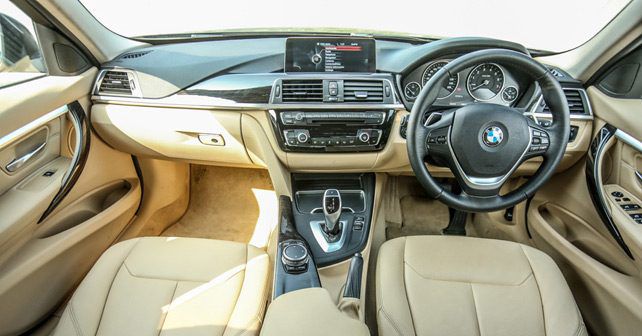
But, then, moments later, you step into the Audi and are ready to eat your words! And that’s awkward because the A4 is the antithesis of what the Bimmer stands for. It’s propelled by the front wheels for starters, and there’s hardly anything that’s analogue about it. Plus, it’s powered by a puny 1.4-litre turbo motor. All of which means it’s not what a purist would want to drive. But, writing the Audi off based on its on-paper performance would be the silliest mistake you could make.
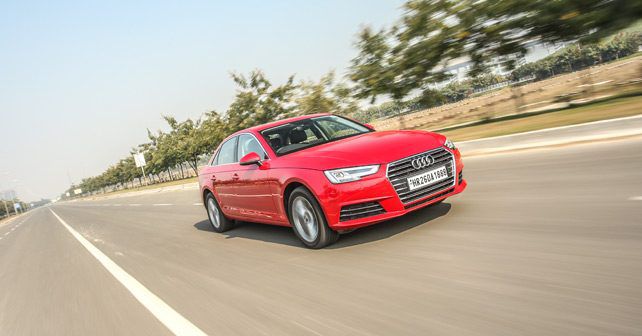
In the past, it was a no-brainer that BMW ‘trumps’ (I use that word with trepidation these days) Audi when it comes to driving pleasure. And while the BMW may retain that aforementioned old-school charm, its driver’s car crown can no longer be taken for granted. For starters, the new A4 has gone on a serious diet – it’s over 100 kilograms lighter than its predecessor. Audi has also junked the old car’s CVT in favour of a 7-speed dual-clutch automatic. And what about the powertrain? Well, if there’s one car here that totally shames its on-paper performance, it’s the A4.
The 1.4-litre is only good for 148bhp and 250Nm of torque, but on the road – surprisingly – it has more than enough grunt on offer. Sure, it’s lacking in outright performance – but it doesn’t feel sluggish either. Most of this is down to the slick-shifting dual-clutch gearbox – and it’s only when you get to the higher reaches of the rev-range that the progress starts slowing down. Another thing about the Audi is its refinement – and dare I say that it sounds a bit sportier than the BMW when you rev the motor hard.

Where the Audi totally trumps (uh-oh, there’s that word again) the 3 Series is when you consider the luxury quotient of these cars. The interior quality of the A4 is miles ahead of the 3 Series. The fit-and-finish of materials is impeccable, and it also packs more gadgets and equipment than its Bavarian counterpart. And, as much as I like the 320i’s analogue dials, I have to say that Audi’s Virtual Cockpit digital instrument cluster is a work of art. It comes with an array of options and feels absolutely cutting edge to operate. The Audi is also more spacious than the BMW, although the seats are a bit stiffer than the 3 Series.
A Petrol SUV. Really?
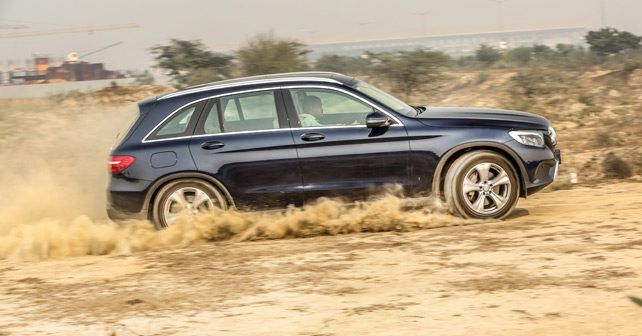
If it’s comfort, space, practicality and slightly more imposing road presence that you’re after, you don’t really have to look beyond the GLC. As we’ve already established in the luxury SUV comparison test that we conducted a few months ago, the Mercedes-Benz GLC stands heads-and-shoulders above its rivals. That was, however, the diesel iteration of the GLC. So does the petrol derivative feel as good? Well, it’s even better actually.
Among the big three Germans, the three-pointed star has always been known for its ability to get luxury and comfort spot on. And the GLC sends this point home with supreme authority. Everything about it is pretty spectacular. The cabin oozes quality like no other car in its segment. The black-beige interior, with exquisite bits – like wood inlays and aluminium knobs – give it that quintessential Mercedes feel. Best of all are the supremely supportive seats and the tactile feel of every component on the inside. There’s this signature stateliness that you only get in a Mercedes.
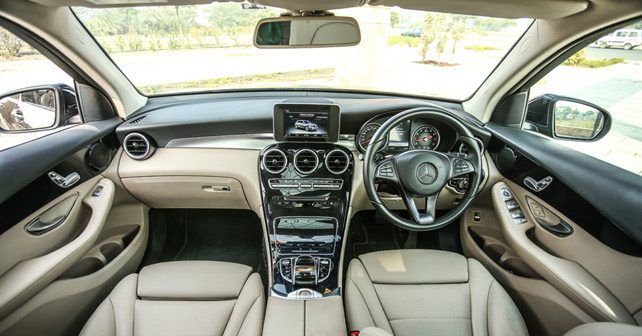
Even the drivetrain and suspension are completely in sync with the comfort theme of the GLC 300. And since it’s a petrol, the refinement is even more impressive than the diesel version. Powering the SUV is a 2.0-litre turbo petrol that churns out 241bhp and 370Nm of peak torque. Surprisingly, the peak torque kicks in from as low as 1,300rpm – considering that the diesel GLC 220d delivers its peak torque at 1,400rpm, that’s pretty remarkable for a petrol motor. The 9-speed gearbox only adds to this relaxed feeling. There are five driving modes that you can choose from – Eco, Comfort, Sport, Sport+ and Individual for steering, throttle and gearbox. And apart from Eco – which completely dulls the driving experience – and Sport+, which makes everything unnecessarily jerky, the GLC 300 drives beautifully.
Over rough patches of roads, the GLC provides a magic carpet-like ride. At high speeds, the road manners are impressive and you can easily extract the full performance from the engine. Just don’t show it a corner as enthusiastically as say in the 320i or A4, and you’re sorted. Instead, you can go soft-roading – which it can do that without so much as twitching a muscle. As a daily driver too, the GLC 300 feels absolutely effortless to drive.
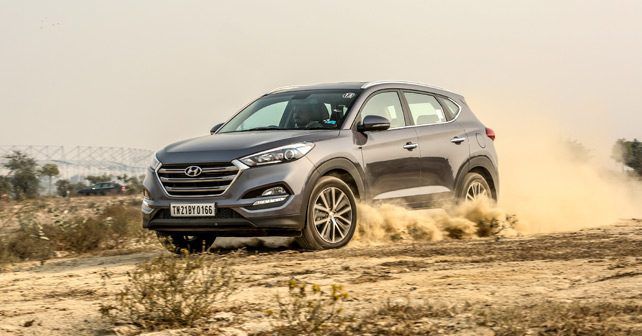
However, if you can do without a three-pointed star badge and some of the niceties it brings, why not consider the Hyundai Tucson for the daily commute instead? Now if I asked you to buy a Hyundai over a Honda – let alone a Mercedes – about 10 years ago, it would’ve made me look like a complete dimwit. But, as things stand today, Hyundai is not only giving nightmares to its direct rivals but also making offerings from the German bigwigs look a bit, erm, overpriced.
As you’ll read in our comparison test between the diesel versions of the BMW X1 and Hyundai Tucson, you’ll see how the underdog is getting on the BMW’s case. It’s a different story for the petrol derivative, though. That’s because the Tucson petrol automatic doesn’t come fully kitted out like the diesel. This means it misses out on features like LED headlamps, a powered boot-lid, traction control, hill assist, descent control, and some other niceties. But if you do without these, it’s still a pretty solid deal.
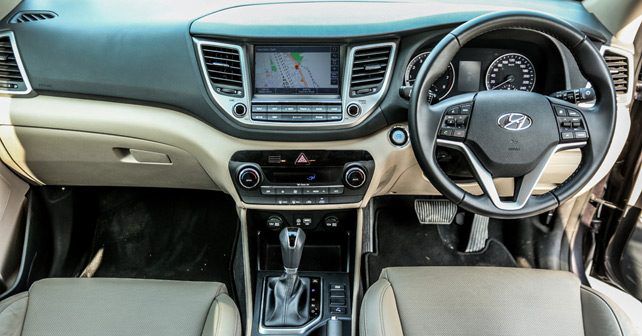
Settling the debate
If you compare the Tucson diesel and Tucson petrol penny-to-penny, there’s a difference of Rs.1.70 lakhs between them. Let’s just say you’ll have to cover a lot of kilometres to make up for that difference in fuel efficiency alone – and that’s to say nothing of the fact that diesels are typically more expensive to service. And don’t forget that once the Euro 6 norms kick in, diesel cars will get exponentially more expensive because of the technology that they’ll require to meet these norms.
In the case of the BMW, it’s a different story since the 320i Luxury Line and 320d Luxury Line carry the exact same price tag. The Mercedes GLC 300, on the other hand, is marginally costlier – about 50 grand dearer than its diesel counterpart, the GLC 220d. But when you factor in the fact that the GLC 300 does 0-100km/h in 6.5 seconds – in absolute silence – while the 220d takes a relatively noisy 8.3 seconds, suddenly the price differential seems negligible. As for the A4, well, Audi hasn’t bothered putting the diesel version of the sedan on sale in India so far – so it’s the only choice for the moment.
The real revelation for us, during this test, was the sheer joy of revving out a petrol engine – something that we had almost forgotten about, as it was a sensation that had been replaced by gobs of mid-range torque thanks to the ubiquity of turbocharged diesel motors over the past few years. There’s really nothing quite like revving the nuts off these silky smooth motors. And even when you choose not to exercise your right foot you still benefit from far higher levels of refinement than any diesel can achieve. Lastly, the fact that the NGT will stay off your back if you drive one of these four machines could be the clincher in helping you choose the fuel powering your next car.
So, are petrols really back? Yup, we certainly think so…
Engine: 1,998cc / 4-Cylinders / 16 Valves / Turbocharged
Fuel: Petrol
Transmission: 8-Speed Automatic / Rear-Wheel Drive
Power: 181bhp @ 5,000rpm
Torque: 270Nm @ 1,350-4,600rpm
Price: Rs.42.70 lakhs (Ex-showroom, Delhi)
X-Factor: A free-revving motor and spot-on chassis balance means that it retains its title of the most involving car in its segment.





